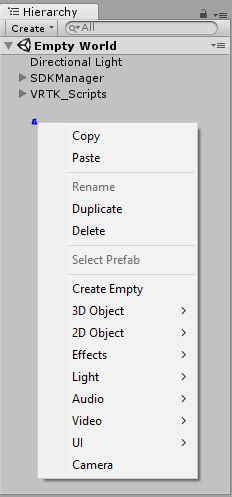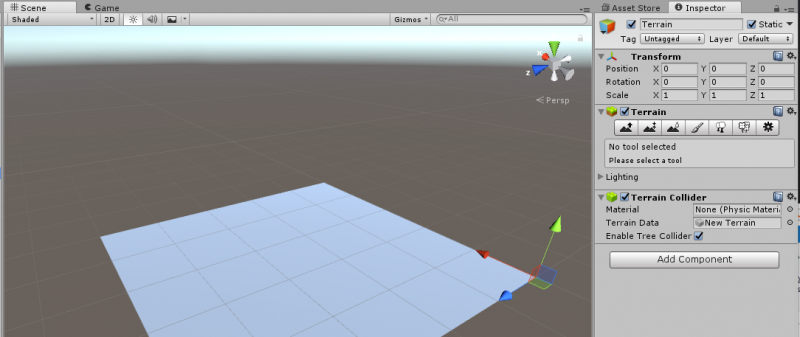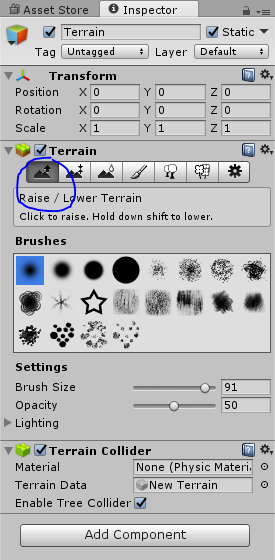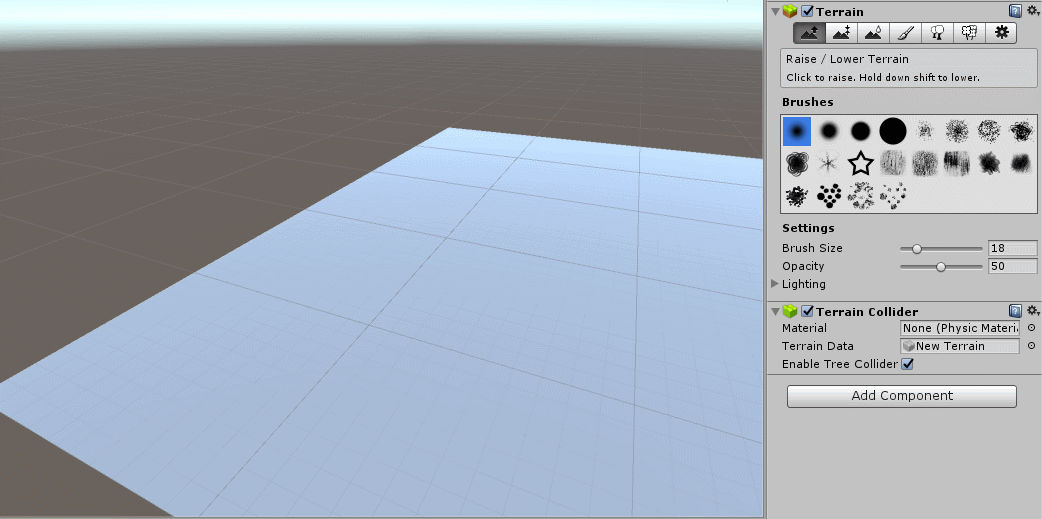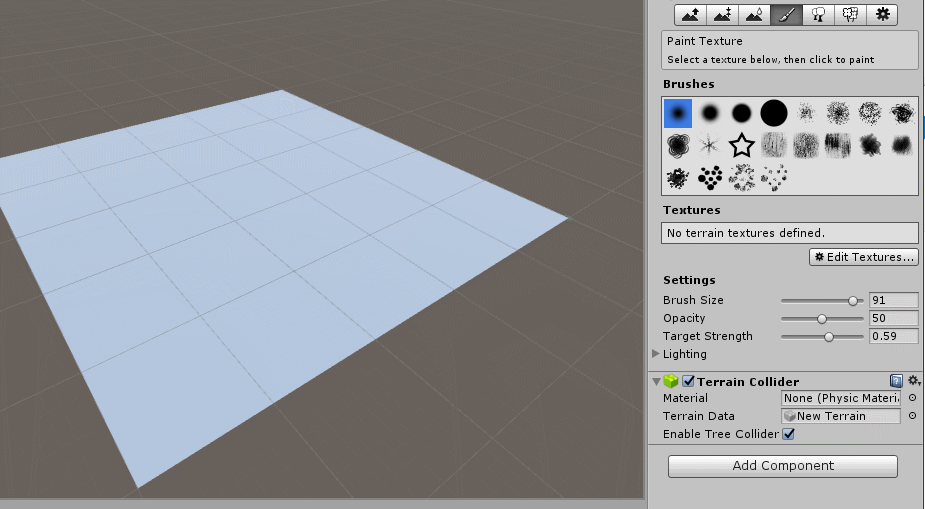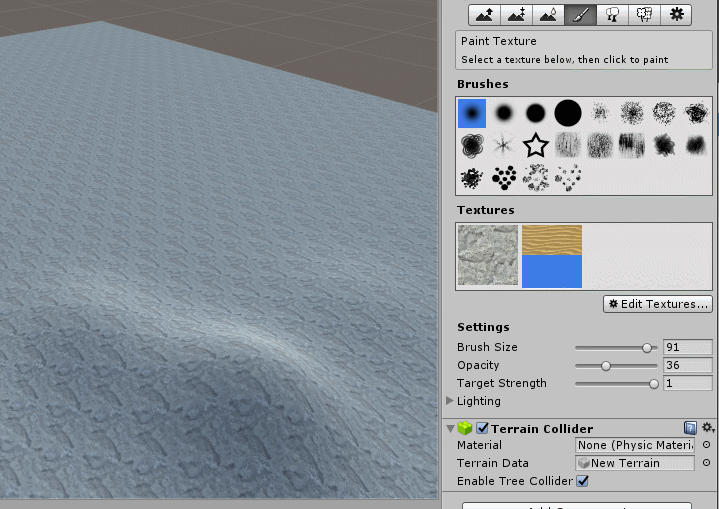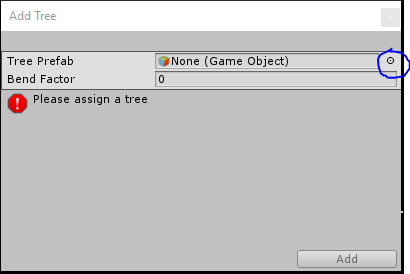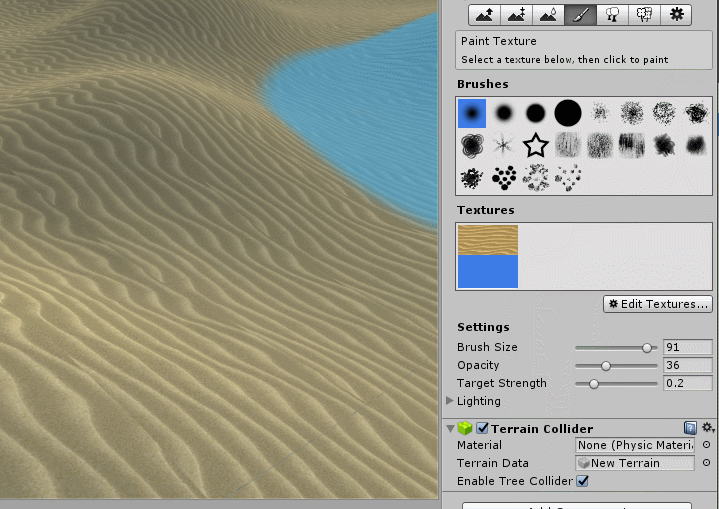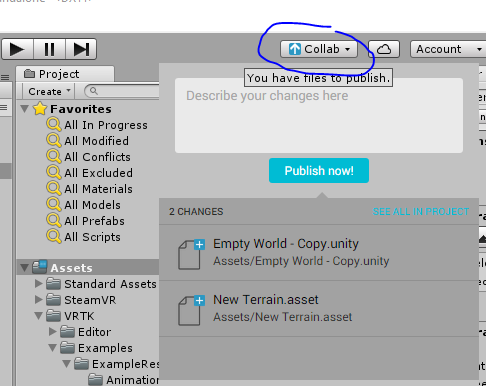Difference between revisions of "Create a Terrain in Unity"
m (→Create the Terrain) |
m (→Create the Terrain) |
||
| Line 13: | Line 13: | ||
[[File:newTerrain.png|800px]] | [[File:newTerrain.png|800px]] | ||
| − | + | Next you should center the terrain's position, go to "Inspector", the tab in the upper right, and in the "Transform" area, there is a line labeled "Position" where you can change the XYZ position of a selected object. Type in -249 for the x value, -5 for y, and -250.9 for the z. | |
=Editing Terrain= | =Editing Terrain= | ||
Revision as of 11:34, 14 November 2017
If using one of the lab computers, start by opening Unity. Go to Projects and choose "EventProjectTemplate" from the list. In the "Project" tab right-click on "Empty World", (in "Assets") pick "Show in Explorer". Right click again on "Empty World", copy and then paste inside "Assets". Right click and go down to "Rename" and rename the scene, this is done to avoid conflicts with other scenes, which may result in deleting other scenes. Once the new scene is saved, go back to the "Project" tab and open the newly duplicated scene by double-clicking on it. It should appear as a new item in your "Assets" folder.
Contents
Manipulation of the Camera
To pan the camera hold down middle mouse wheel and move the mouse around. You can also rotate the camera by holding down the "Alt" key, Left click, and moving the mouse around.
Create the Terrain
To create a terrain, right-click anywhere in the tab labeled, "Hierarchy" and a new menu should appear (see below, the blue dot is an example where to right-click).
Then, go down to "3D Object", and from the sub-menu that appears, choose "Terrain". Once selected, a large blank plane should appear. Select it, and various options appear in the "Inspector". (If there is any confusion as to where all these tabs are, refer to this guide)
Next you should center the terrain's position, go to "Inspector", the tab in the upper right, and in the "Transform" area, there is a line labeled "Position" where you can change the XYZ position of a selected object. Type in -249 for the x value, -5 for y, and -250.9 for the z.
Editing Terrain
Hills and Valleys - Adjusting Terrain Height
Select the terrain icon which has an up arrow. Make sure "opacity" is above zero, as this affects how big the hills are. The brush size can also be changed to make larger mountain ranges.
Once adjusted, left click (or click and drag to make continuous formations) anywhere on the terrain plane to raise it at that point. Pressing the "shift" key while clicking will lower that part of the terrain, though it will not go below the terrain's initial level, regardless of the y coordinate.
Adding Texture to the Terrain
Pick the paintbrush icon from the terrain toolbar. 
Add a texture to paint with by going to "Edit Texture", "Add Texture", then "Albedo (RGB) Smoothness (A)". Select and choose a compatible image type for the terrain (Note: To enlarge the images in the selection window, use the slider on the top right corner of that selection window). Once you've chosen something, double click on that image in the selection window to actually select it and then back in the "Add Terrain Texture" window, and finally press add. Before doing any painting, set "Target Strength" and "Opacity" to something above zero.
Brush size is the size of the area you'll edit by clicking on the terrain once.
Opacity is the transparency or amount of texture applied for a given amount of time you paint.
Target Strength is the maximum opacity you can reach by painting continuously.
The first texture you add becomes the default for the entire terrain. If you add another texture aside from that first one, you can paint over the default with the newly added one. Whichever texture has the blue line or rectangle underneath is the texture you have currently selected to paint with.
Trees and Plants
Add a Tree
Pick Edit Trees > Add Trees, and then when the window comes up, use the file picker (circled below) to choose "Broadleaf_Desktop" or "Broadleaf_Mobile". (It can really be anything you want, trees usually work better given that's what the "Place Trees" tool is intended to do)
Using the brush to place trees
Brush size is how large the area you would like to paint with for 1 click.
Tree Density is how many trees will get placed in the circle when you click or move the mouse when you click and drag. Shift click to remove trees in the area you click with a radius of the chosen brush size.
If you'd like to learn more about Unity, please refer to our more detailed tutorial!
Test it out!
Normally
You can view your new terrain by pressing the play button at the top middle of the editor. 
On the Vive
You can also try this out on the HTC Vive by first clicking on the collab button.
Then press publish. If any prompts come up asking if you'd like to save your scene before doing anything else.
Next, go over to the computer the Vive is hooked up to, and open Unity, and load up EventProjectTemplate. If the Collab button has an orange arrow next to it (as in ![]() ), click on it and update the project (this will make sure your new scene shows up in the Assets folder). Open your scene, press play, and put on the headset to try it out!
), click on it and update the project (this will make sure your new scene shows up in the Assets folder). Open your scene, press play, and put on the headset to try it out!
